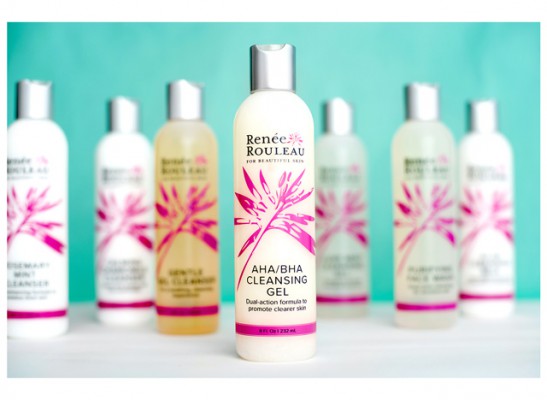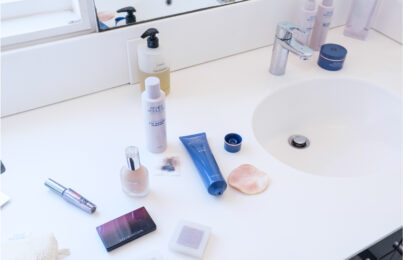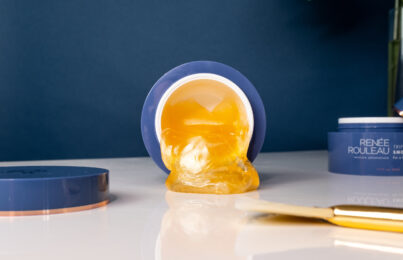Updated 10/24/15. Teenagers often don’t have it easy with their skin. Due to hormonal changes that can start to kick in at 13 years old (if not earlier), acne, oiliness and clogged pores can all be problematic and hard to keep under control.
Acne is caused by several factors. First, you start with clogged pores (ostiums). Then, excessive amounts of sticky oil (sebum) back up in the pores (follicles). When bacteria feeds on this sebum, you get inflammation. The resulting blemish is the body’s attempt to fight off the invasive bacteria.
Perhaps acne is genetic for teens, but no one really knows why some will develop acne, while others do not. What you need to understand is that controlling acne is just like maintaining your weight. You don’t just lose a few pounds and then go back to eating anything you like. Acne is the same way—it requires constant care and discipline. Here are ten of my best skincare tips that will help manage oiliness to keep skin clear.
#1 Don’t wash with a bar of soap or high-foaming gel cleansers. Bar soap and many foaming cleansers have high pH balances with harsh ingredients that strip the water out of the skin, creating layers of dead, dry skin cell buildup. These cell layers act as a barrier to keep oil and bacteria trapped under the skin’s surface causing an increase in blemish activity. Choose gel cleansers that avoid the harsh ingredient sodium laureth sulfate or sodium laureth sulfate. By avoiding these ingredients in your over-the-counter acne products, they won’t rob the skin of much needed water. The goal is a gentle, yet deep-pore cleansing. I recommend to my teen clients to use either AHA/BHA Deep Pore Cleanser (for sensitive, blemish-prone skin types) or Purifying Face Wash (for sensitive, oily and combination skin types). Take my Skin Type Quiz to find your skin type.
#2 Always use a toner after cleansing, but make sure it’s alcohol-free. Toners are an excellent way to give young, delicate skins the water-based hydration they need to keep skin cells healthy and performing effectively, as long as they don’t contain drying alcohols. After cleansing, wipe a toner over the skin and leave damp before applying a moisturizer to seal in hydration. Read five reasons why using a toner will help improve the skin. See my alcohol-free toner recommendations.
#3 Wash your face every single night—no matter what. It’s so important to cleanse your skin at night to remove makeup, dirt, oil and environmental debris that builds up on the skin. But did you know that the face is the dirtiest part of your body simply because, without realizing it, you’re touching your face all day long? Whatever you touched with your hands will get on your face making the skin a breeding ground for bacteria—and that is not ever good for teens with oil and prone to blemishes. Be sure to wash your face every night. Your skin will be clearer (and thank you!) for the effort you put in.
#4 Don’t pick at your skin—and if you do, make sure it’s at the right time. I know it’s tempting, but you can make problem skin a lot worse by forcing bacteria deeper into the skin, resulting in scarring and further breakouts. However, sometimes it’s beneficial to take matters into your own hands when a blemish appears to get rid of it more quickly. Read how to make a blemish go away fast for tips on when it’s appropriate to pick at a blemish.
#5 Avoid dairy products if your skin is prone to breakouts. Many people have heard that greasy foods and chocolate cause breakouts but in all my years of skincare experience, when breakouts are cyst-like in the chin and jaw area, most often this is related to ingesting too many dairy products. Try eliminating cheese, milk, ice cream, and frozen yogurt, and your cystic blemishes may be a thing of the past. Read more about how dairy can affect the skin.
#6 Change pillowcases often. For problem skin, bacteria and oil can build up on your pillowcase and be reintroduced to your skin the following night. Clean skin can result in clear skin so invest in a nice stack of pillowcases and make sure to wash them with a dye-free and fragrance-free laundry soap to avoid any potential irritants touching your face.
#7 Understand your blemishes and treat them accordingly. Not all types of acne are equal and each type requires a different strategy for getting them to clear. Whiteheads, blackheads, pustules, papules, milia and cysts, which kind do you get? Read solutions for all the different types of blemishes you might experience here.
#8 Wear sunscreen every day. You know how when you get a blemish, it leaves a red, dark scar? This may come as a surprise but sunscreen will actually help these fade faster. Where sunscreen plays an important role for acne-prone skin types is in its ability to keep pigment cells calmed down so the fading process can begin. Acne scars are the result of inflammation within the dermis layer of the skin that triggers pigment cells resulting in red or purple discoloration. When your skin is exposed to UV daylight (in spring, summer, fall and winter), this keeps pigment cells awake and active so a blemish scar has a harder time to fade. Wearing sunscreen (of course, always use a lightweight, non-pore clogging SPF like this one) will protect the damaged cells to properly heal, recover and fade so the skin can get even-toned much faster.
Find a sunscreen formula that is compatible with your skin type and I promise that your blemishes will be a thing of the past. If you play outdoor sports after school, be sure to keep one in your bag and reapply it often. (For an even quicker recovery, I recommend my clients to dab on Post-Breakout Fading Gel at night to encourage scarred cells to be removed.)
#9 Consider using a prescription retinoid but only use if you have the right type of acne. You might be aware of how using a prescription retinoid (like Retin-A, Differin, Avita and Tazorac are commonly prescribed ones by a dermatologist) can be beneficial for clearing acne but in truth, not all types of acne will find these topical treatments beneficial. Read what types of skin respond best to using a retinoid.
#10 Use a skin serum with pore-clearing salicylic acid. There are so many ingredients that can be used to help clear acne but many of them are simply too drying for the skin. (Benzoyl Peroxide and SD Alcohol 40 to name a few.) Drying out the skin will indeed dry out and heal individual blemishes but you run the risk of creating dead cells in non-broken out areas that will cause oil and bacteria to stay trapped under the skin and in the pores resulting in increased clogged pores and blemishes. (Like mentioned in skin tip #1.) My very favorite ingredient for clearing acne, especially in sensitive skin like a teenager will have, is salicylic acid. It’s a keratolytic beta hydroxy acid (BHA) famous for its ability to smooth the skin without causing irritation, reduce acne-causing bacteria and oil to prevent blemishes, all while penetrating the pores to help clear out impurities. It’s found in BHA Clarifying Serum, Triple Berry Smoothing Peel, AHA/BHA Deep Pore Cleansing Gel and Daytime Blemish Gel. These are all powerful products using this ingredient that is scientifically proven to give excellent results for clearing acne and clogged pores.
Read: 8 Tips to Prevent Chin And Jawline Breakouts
Read: What’s The Best Spot Treatment For Blemishes?
Read: 11 Common Causes For Blemishes
Which skin care products are best for you? See our nine skin types or take the Skin Type Quiz and get products recommended.
Need expert advice from a licensed esthetician? Schedule a virtual consultation to get customized advice in person, over the phone or online via Skype or FaceTime.
For more expert advice check out the blog. Also sign up for our skin tip e-newsletter, follow Renée Rouleau on Twitter and Instagram and join the discussion on our Facebook page. You’ll be your own skin care expert in no time. Get the #ReneeRouleauGlow!
Celebrity Esthetician & Skincare Expert
As an esthetician trained in cosmetic chemistry, Renée Rouleau has spent 30 years researching skin, educating her audience, and building an award-winning line of products. Her hands-on experience as an esthetician and trusted skin care expert has created a real-world solution — products that are formulated for nine different types of skin so your face will get exactly what it needs to look and feel its best. Trusted by celebrities, editors, bloggers, and skincare obsessives around the globe, her vast real-world knowledge and constant research are why Marie Claire calls her “the most passionate skin practitioner we know.”



